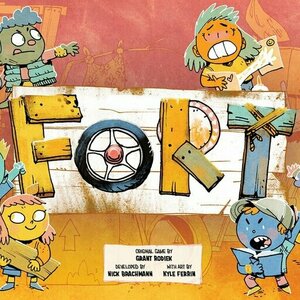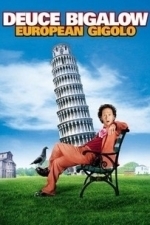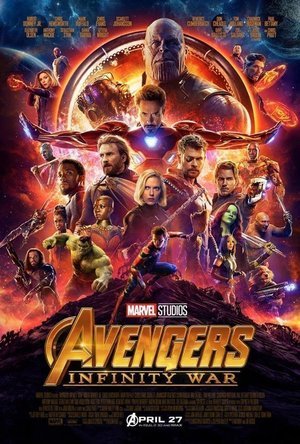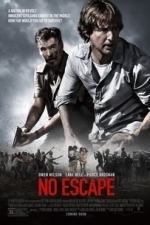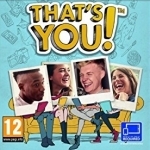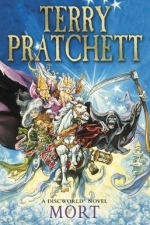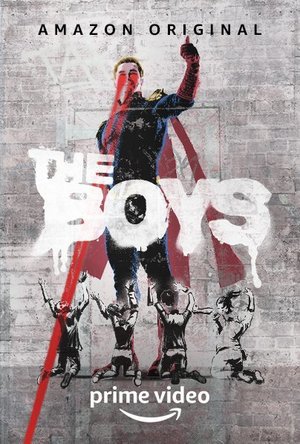Search
Search results
Purple Phoenix Games (2266 KP) rated Fort in Tabletop Games
Jul 27, 2021
One activity my 5-year-old son will never tire of: building forts. Mostly pillow/blanket-based, but all I am doing is grooming him for an eventual treehouse fort of his own in the backyard someday. What an excellent theme for a game, and when I had a chance to speak with Brooke from Leder Games about reviewing this one, I absolutely jumped for joy for the opportunity. No guessing whether we like a game here at Purple Phoenix Games – we put our ratings right on the first graphic of every review, so you know already that I love Fort. Let’s see why.
Fort is a hand management, deck-building game with a follow mechanic for two to four players. In it, players are assuming the roles of everyday kids trying to build their forts, play with their toys, and eat pizza with their buddies. The winner of the game is they who is able to score the most victory points (VP) at the end of the game, which can end in one of three different fashions.
DISCLAIMER: We were provided a copy of this game for the purposes of this review. This is a retail copy of the game, so what you see in these photos is exactly what would be received in your box. I do not intend to cover every single rule included in the rulebook, but will describe the overall game flow and major rule set so that our readers may get a sense of how the game plays. For more in depth rules, you may purchase a copy online or from your FLGS. -T
To setup, each player chooses a player color and takes all items belonging to them, including the Best Friends cards from the stack. Every other component is then separated by type and cards shuffled. Per the rules, some decks of cards will only have a certain amount on the table, whereas the main deck of kid cards is always used. Each player will draw eight kid cards from the deck to add to their Best Friends and shuffle them. They will also place their score markers on the 0 space of the Victory Track board. Randomly determine the starting player and give them the coveted First Player card, and the game may now begin!
Fort is played in turns, with each turn consisting of five phases (the first phase is skipped on the first turn). The first phase is Cleanup. To Cleanup, the active player takes all kid cards remaining in their Yard and places them in their own discard pile. Next, the active player will Play a kid card from their hand. On each card is a space for up to two actions to be taken: the public action on top and the private action on bottom. The player may complete both, but MUST complete at least one of the actions in its entirety. If using the public action of the card, then other players at the table may also follow the action by discarding one card of the matching suit of the card originally played. However, the leader (active player) may also play additional cards from their hand, of the same suit, in order to boost the effects of the actions. Followers may not. These actions include gaining “stuff” (pizza and toys) to be placed in their Stuff area or backpack, trashing cards in their hands, or gaining VP.
After the players have Played cards, the next phase is Recruit. The active player may choose any kid card that exists in the Park (the space underneath the Victory Track that is always full of kids), another player’s Yard (the space above the player’s main board that they neglected to play with their previous turn), or they may simply draw a kid card blindly from the Park deck. These kids are sent directly to the discard pile to be drawn on a later turn.
Finally, phases four and five end a player’s turn. Phase four is Discard, where the active player will discard all their Best Friends, kid cards they played this turn, and recruited kids. The kid cards leftover that were not used are sent to the player’s Yard above their main boards to possibly be stolen by another player during their Recruit phase. After Discarding, the final phase is Draw, where the active player will draw another hand of five cards to prepare to follow other players and to prepare for the next round. Fort continues in this fashion of each player taking turns and following others’ actions until one player earns 25 VP on the track, any player increases their Fort to level 5, or the Park deck becomes empty. All players will finish their turns so that they all have played an equal amount of turns, and then the players total their scores to crown the winner!
Components. This game has super great components. The little pizza and toys bits are awesome, the double-layered boards are cool, and the art is amazing as well. If it looks familiar in style, it’s because you have seen this art on Root, Oath, and Vast, among others. I love it so much and it is a perfect match for this theme. I really have little negative to say about Fort except that I wish the player colors were different. The orange and yellow are a little close in hue, and the brownish/olive is drab. Everything else, though, *chef’s kiss.
It is probably no surprise why I love this one. Deck-building has long been one of my favorite mechanics, and I have always enjoyed the follow mechanic found in Tiny Epic Galaxies and Villages of Valeria. Mix those up with much more going on and an excellent theme and it’s definitely a big time winner for me. I think what puts me over the edge here is that cards can be used for a couple different actions, and they can be boosted with the right strategies. Get your deck in order to really maximize each turn and the game opens up for you. Several times I have been able to focus my deck and really pound some powerful abilities, but it certainly doesn’t always work out for me, especially when others catch on to what I am doing and hate-draft me into other tactics.
If you are into a fresh new look at deck-building and enjoy more wacky themes, as I do, then I urge you to check out Fort. Officially, Purple Phoenix Games gives this one a playful 5 / 6, but even though it probably won’t break into my Top 10, I do think it will come to the table more often than most games in my Top 10. So should I reconsider my Top 10? Hmm. Anyway, Fort is awesome and everyone I have played with seem to agree with me. So grab a copy or two for yourself. Heck, the gift-giving season is fast approaching, and I know these fit very well under trees and other significant symbols of festivities…
Fort is a hand management, deck-building game with a follow mechanic for two to four players. In it, players are assuming the roles of everyday kids trying to build their forts, play with their toys, and eat pizza with their buddies. The winner of the game is they who is able to score the most victory points (VP) at the end of the game, which can end in one of three different fashions.
DISCLAIMER: We were provided a copy of this game for the purposes of this review. This is a retail copy of the game, so what you see in these photos is exactly what would be received in your box. I do not intend to cover every single rule included in the rulebook, but will describe the overall game flow and major rule set so that our readers may get a sense of how the game plays. For more in depth rules, you may purchase a copy online or from your FLGS. -T
To setup, each player chooses a player color and takes all items belonging to them, including the Best Friends cards from the stack. Every other component is then separated by type and cards shuffled. Per the rules, some decks of cards will only have a certain amount on the table, whereas the main deck of kid cards is always used. Each player will draw eight kid cards from the deck to add to their Best Friends and shuffle them. They will also place their score markers on the 0 space of the Victory Track board. Randomly determine the starting player and give them the coveted First Player card, and the game may now begin!
Fort is played in turns, with each turn consisting of five phases (the first phase is skipped on the first turn). The first phase is Cleanup. To Cleanup, the active player takes all kid cards remaining in their Yard and places them in their own discard pile. Next, the active player will Play a kid card from their hand. On each card is a space for up to two actions to be taken: the public action on top and the private action on bottom. The player may complete both, but MUST complete at least one of the actions in its entirety. If using the public action of the card, then other players at the table may also follow the action by discarding one card of the matching suit of the card originally played. However, the leader (active player) may also play additional cards from their hand, of the same suit, in order to boost the effects of the actions. Followers may not. These actions include gaining “stuff” (pizza and toys) to be placed in their Stuff area or backpack, trashing cards in their hands, or gaining VP.
After the players have Played cards, the next phase is Recruit. The active player may choose any kid card that exists in the Park (the space underneath the Victory Track that is always full of kids), another player’s Yard (the space above the player’s main board that they neglected to play with their previous turn), or they may simply draw a kid card blindly from the Park deck. These kids are sent directly to the discard pile to be drawn on a later turn.
Finally, phases four and five end a player’s turn. Phase four is Discard, where the active player will discard all their Best Friends, kid cards they played this turn, and recruited kids. The kid cards leftover that were not used are sent to the player’s Yard above their main boards to possibly be stolen by another player during their Recruit phase. After Discarding, the final phase is Draw, where the active player will draw another hand of five cards to prepare to follow other players and to prepare for the next round. Fort continues in this fashion of each player taking turns and following others’ actions until one player earns 25 VP on the track, any player increases their Fort to level 5, or the Park deck becomes empty. All players will finish their turns so that they all have played an equal amount of turns, and then the players total their scores to crown the winner!
Components. This game has super great components. The little pizza and toys bits are awesome, the double-layered boards are cool, and the art is amazing as well. If it looks familiar in style, it’s because you have seen this art on Root, Oath, and Vast, among others. I love it so much and it is a perfect match for this theme. I really have little negative to say about Fort except that I wish the player colors were different. The orange and yellow are a little close in hue, and the brownish/olive is drab. Everything else, though, *chef’s kiss.
It is probably no surprise why I love this one. Deck-building has long been one of my favorite mechanics, and I have always enjoyed the follow mechanic found in Tiny Epic Galaxies and Villages of Valeria. Mix those up with much more going on and an excellent theme and it’s definitely a big time winner for me. I think what puts me over the edge here is that cards can be used for a couple different actions, and they can be boosted with the right strategies. Get your deck in order to really maximize each turn and the game opens up for you. Several times I have been able to focus my deck and really pound some powerful abilities, but it certainly doesn’t always work out for me, especially when others catch on to what I am doing and hate-draft me into other tactics.
If you are into a fresh new look at deck-building and enjoy more wacky themes, as I do, then I urge you to check out Fort. Officially, Purple Phoenix Games gives this one a playful 5 / 6, but even though it probably won’t break into my Top 10, I do think it will come to the table more often than most games in my Top 10. So should I reconsider my Top 10? Hmm. Anyway, Fort is awesome and everyone I have played with seem to agree with me. So grab a copy or two for yourself. Heck, the gift-giving season is fast approaching, and I know these fit very well under trees and other significant symbols of festivities…
Gareth von Kallenbach (980 KP) rated Deuce Bigalow: European Gigolo (2005) in Movies
Aug 14, 2019
Europe. The very name brings up images of rich traditions, centuries-old stunning architecture, fine cuisine, historic artwork, and of course culture and sophistication. Europe has endured wars, plagues, and hordes of unruly soccer fans and has remained intact. Perhaps its greatest challenge is about to arrive in the form of Deuce Bigalow, pool cleaner, fish lover, and male Gigolo.
Rob Schneider returns as Deuce, who has given up his man-whoring ways and married the girl of his dreams. As the film opens, we learn that Deuce was widowed on his honeymoon and has carried a torch for his departed wife for years. The fact that the torch in question is actually her artificial limb is a creepy sentiment that further isolates Deuce from those around him.
After a day at the beach goes horribly wrong, Deuce happily accepts an invitation from his friend T.J. (Eddie Griffin), and travels to Amsterdam for some time away. With the artificial limb in tow, Deuce arrives and learns that a mysterious killer has been dispatching Europe’s top gigolos and before you can say “space cake” T.J. is implicated in the murders and on the run, forcing Deuce to go back to his man-whoring in an effort to learn who is behind the killings.
Since Deuce witnessed the aftermath of a recent killing, he is convinced that the killer is a woman and that only by dating those clients of the recently departed can he find the proof needed to free T.J.
Of course Deuce doesn’t get the cream of society. His clients are a mixed bag that makes his Janes from the first film seem normal. There is the lady with the gaping hole in her throat, a lady whose ears put Dumbo’s to shame, a giant with an infant fetish, and a woman with a male sex organ for a nose.
It is against this backdrop that Deuce meets Eva (Hanna Verboom), an artist with Obsessive Compulsive Disorder and the daughter of the police inspector
investigating the case. Deuce is taken with the charming Eva which leads to even more conflict for the widowed Deuce.
As if his life could not get any worse, Deuce is at odds with the European Society of Man Pimps who constantly go out of their way to taunt Deuce and his inclusion in their profession.
Over the next 90 minutes a constant barrage of crude jokes ensues ranging from the gross to the juvenile. Yet despite the ongoing crude and sophomoric humor, I found myself laughing as did the majority of the audience at my screening.
While I can see how many critics will not like this film due to a very basic story, thin characters and crudeness, the film works very well as a mindless comedy.
The characters are not expanded from their roles in the original and do not need to be. We know that Deuce is an easy going loser with a heart of gold and that is all we need to know.
Schneider and Griffin work well with one another and the constant euphemisms such as Mangina, He-Hoe and Hegina flow often only to be followed by new and even more creative phrases.
If you are a fan of the original and do not get offended easily than this is going to be your film. It isn’t trying to break new ground, it is trying to make you laugh, and for this critic, despite the films flaws, I laughed constantly throughout, and in many cases harder than I have at any film in recent years.
Rob Schneider returns as Deuce, who has given up his man-whoring ways and married the girl of his dreams. As the film opens, we learn that Deuce was widowed on his honeymoon and has carried a torch for his departed wife for years. The fact that the torch in question is actually her artificial limb is a creepy sentiment that further isolates Deuce from those around him.
After a day at the beach goes horribly wrong, Deuce happily accepts an invitation from his friend T.J. (Eddie Griffin), and travels to Amsterdam for some time away. With the artificial limb in tow, Deuce arrives and learns that a mysterious killer has been dispatching Europe’s top gigolos and before you can say “space cake” T.J. is implicated in the murders and on the run, forcing Deuce to go back to his man-whoring in an effort to learn who is behind the killings.
Since Deuce witnessed the aftermath of a recent killing, he is convinced that the killer is a woman and that only by dating those clients of the recently departed can he find the proof needed to free T.J.
Of course Deuce doesn’t get the cream of society. His clients are a mixed bag that makes his Janes from the first film seem normal. There is the lady with the gaping hole in her throat, a lady whose ears put Dumbo’s to shame, a giant with an infant fetish, and a woman with a male sex organ for a nose.
It is against this backdrop that Deuce meets Eva (Hanna Verboom), an artist with Obsessive Compulsive Disorder and the daughter of the police inspector
investigating the case. Deuce is taken with the charming Eva which leads to even more conflict for the widowed Deuce.
As if his life could not get any worse, Deuce is at odds with the European Society of Man Pimps who constantly go out of their way to taunt Deuce and his inclusion in their profession.
Over the next 90 minutes a constant barrage of crude jokes ensues ranging from the gross to the juvenile. Yet despite the ongoing crude and sophomoric humor, I found myself laughing as did the majority of the audience at my screening.
While I can see how many critics will not like this film due to a very basic story, thin characters and crudeness, the film works very well as a mindless comedy.
The characters are not expanded from their roles in the original and do not need to be. We know that Deuce is an easy going loser with a heart of gold and that is all we need to know.
Schneider and Griffin work well with one another and the constant euphemisms such as Mangina, He-Hoe and Hegina flow often only to be followed by new and even more creative phrases.
If you are a fan of the original and do not get offended easily than this is going to be your film. It isn’t trying to break new ground, it is trying to make you laugh, and for this critic, despite the films flaws, I laughed constantly throughout, and in many cases harder than I have at any film in recent years.
Purple Phoenix Games (2266 KP) rated Quests: Heroes of Sorcado in Tabletop Games
May 26, 2021
I’ve mentioned before that we at Purple Phoenix Games are currently working our way through a DnD 5e campaign. For almost all of us, this has been our first foray into the world of role-playing games. It’s a lot of fun, although it’s quite a daunting task at first. But more often these days, you can find board games that serve as fun, cooperative, and easier to learn/manage versions of these popular role-playing giants. Enter Quests: Heroes of Sorcado. How does it fare in the lineup of campaign-driven board games? Let the demo adventure help you decide.
Disclaimer: For this preview, we were provided with a Tabletop Simulator file for the demo/prequel adventure. These are not the final components, since it is a digital file, but the artwork and rulebook are mostly finalized – so the gameplay is what you will get in the physical copies of the game. -L
Quests: Heroes of Sorcado is a cooperative, campaign-driven game in which 1-6 players will take on the roles of party members with the goal of completing all 8 of the included adventures. The game does come with a tutorial/prequel adventure to help introduce players to the mechanics and overall gameplay before diving in to the full game. To setup for this Adventure Zero, place the game board within reach of all players, set aside the Campaign and Adventure books, place the Boss card for this adventure face-down above the board, and sort and place Potion/Loot/Armor/Health tokens in their corresponding areas. Set the 6 required Adventurers for the prequel in a circle near the game board, and take the listed Health and Starting Equipment for each Adventurer. The prequel uses only a single Location, so set that Deck in one of the Location spaces of the board, and the game is now ready to begin!
Depending on the player count, everyone will take on the role of at least one of the Adventurers, and the game itself is wholly cooperative. Here is how Adventure Zero works. Each Adventurer, in clockwise order, will be dealt 1 face-down Location card. Then, starting from the first dealt Location card, the Adventurers will take turns revealing their card. Some cards are Events or Story Moments, and prompt players to read from the Adventure/Campaign books. These cards often describe a scenario and require the player to select one of several provided choices, either earning a reward or penalizing the group. Most cards are Monster cards and will begin a combat! Each of the Adventurers has varying values for the four Stats of the game: Strength, Intelligence, Dexterity, and Wisdom. Combat in the game involves rolling a d20 and adding the appropriate Stat modifiers to the roll. You can also use Potions and Equipment to buff your rolls as well. How do you determine success or failure? Every Monster has a weakness to a specific Stat, so you will use that Stat modifier to enhance your rolls. Equal or exceed the Monster’s weakness, and it is defeated! Depending on the difficulty/level of the Monster, you will either fight with 2-6 Adventurers – adding their modifiers and abilities to your roll as well. How you setup your Adventurers is important, as adjacency is what helps determine who can be in each combat. If you defeat a Monster, collect the reward (Loot tokens, Potions, or Treasure cards), and the game continues to the next player. If you lose the fight, the Monster moves to the next Adventurer and combat begins anew. Once every Location card has been revealed and resolved, the Adventurers will reveal the Boss card and the final combat begins! Even though each combat has one primary Adventurer/player at the helm, the game is cooperative, so make sure you’ve got that teamwork mentality!
I have to say that I was pleasantly surprised by Quests: Heroes of Sorcado. The gameplay may seem a bit involved at first, but it actually flows pretty seamlessly and effortlessly. As someone who has played a handful of other campaign-driven board games before, I have to say that this one was by far the easiest for me to learn and play. Resolve Location cards, beat Monsters, and (hopefully) defeat the final Boss. Pretty straight-forward, and I really appreciate that. One thing that helps make it so user-friendly is that the game is based on only 4 Stats, instead of every conceivable Stat used in other role-playing games. That helps keep the game uncomplicated, while still offering players options every turn. Another thing that I really like? The Campaign/Adventure books are pre-written stories, prompts, and scenarios that allow the game to be truly cooperative. No need for an all-knowing Game Master here, as everything is already laid out for you. I also really like these pre-written aspects because it helps deliver the role-playing feel without pressuring the players to create their own campaign. Yes, there are still some ‘choose your adventure’ elements to it, but it doesn’t give so many options to overwhelm players.
That being said, I do have to mention that this is a campaign-driven game, so you will know the main storyline after your first complete playthrough. Although you would know the Monsters/Events/Boss/etc. of each adventure, the shuffle and draw of the decks would allow for variability, and thus replayability. You know the all the twists in the story, but will be able to play with different hero combinations as well! All 8 adventures will take quite some time to complete though, so don’t let the fact that you’ll know the main storyline after one playthrough turn you off from the game completely! Normally, I like to talk about the components of a game. Since this was a Tabletop Simulator version of the game, I am unable to really do so. I will commend the artwork and style of the game though – it is very thematic, engaging, colorful, and fun to look at. The text and abilities are clear, I love the color-coded modifiers, and the cards are all pretty intuitive. I have no doubts that the physical copies of the game will be quality productions as well.
As I stated above, this preview only covers the demo/prequel adventure, and its real purpose is to introduce players to the gameplay. That being said, I know that the full adventures will offer players additional elements (Side Quests, trading Loot and Potions, ‘level up’ the Adventurers, etc.) that will just add to the experience. Yes, there is the ‘one and done’ aspect of a campaign-driven game, but there is so much content in the full game to keep you going for quite a long time. If you’re looking at getting into this genre of game, but are worried about complexity, I would highly recommend Quests: Heroes of Sorcado. The gameplay overall is simple and straight-forward, while still offering the epic campaign feel. This one hits Kickstarter today, so head on over and check it out for yourself!
Disclaimer: For this preview, we were provided with a Tabletop Simulator file for the demo/prequel adventure. These are not the final components, since it is a digital file, but the artwork and rulebook are mostly finalized – so the gameplay is what you will get in the physical copies of the game. -L
Quests: Heroes of Sorcado is a cooperative, campaign-driven game in which 1-6 players will take on the roles of party members with the goal of completing all 8 of the included adventures. The game does come with a tutorial/prequel adventure to help introduce players to the mechanics and overall gameplay before diving in to the full game. To setup for this Adventure Zero, place the game board within reach of all players, set aside the Campaign and Adventure books, place the Boss card for this adventure face-down above the board, and sort and place Potion/Loot/Armor/Health tokens in their corresponding areas. Set the 6 required Adventurers for the prequel in a circle near the game board, and take the listed Health and Starting Equipment for each Adventurer. The prequel uses only a single Location, so set that Deck in one of the Location spaces of the board, and the game is now ready to begin!
Depending on the player count, everyone will take on the role of at least one of the Adventurers, and the game itself is wholly cooperative. Here is how Adventure Zero works. Each Adventurer, in clockwise order, will be dealt 1 face-down Location card. Then, starting from the first dealt Location card, the Adventurers will take turns revealing their card. Some cards are Events or Story Moments, and prompt players to read from the Adventure/Campaign books. These cards often describe a scenario and require the player to select one of several provided choices, either earning a reward or penalizing the group. Most cards are Monster cards and will begin a combat! Each of the Adventurers has varying values for the four Stats of the game: Strength, Intelligence, Dexterity, and Wisdom. Combat in the game involves rolling a d20 and adding the appropriate Stat modifiers to the roll. You can also use Potions and Equipment to buff your rolls as well. How do you determine success or failure? Every Monster has a weakness to a specific Stat, so you will use that Stat modifier to enhance your rolls. Equal or exceed the Monster’s weakness, and it is defeated! Depending on the difficulty/level of the Monster, you will either fight with 2-6 Adventurers – adding their modifiers and abilities to your roll as well. How you setup your Adventurers is important, as adjacency is what helps determine who can be in each combat. If you defeat a Monster, collect the reward (Loot tokens, Potions, or Treasure cards), and the game continues to the next player. If you lose the fight, the Monster moves to the next Adventurer and combat begins anew. Once every Location card has been revealed and resolved, the Adventurers will reveal the Boss card and the final combat begins! Even though each combat has one primary Adventurer/player at the helm, the game is cooperative, so make sure you’ve got that teamwork mentality!
I have to say that I was pleasantly surprised by Quests: Heroes of Sorcado. The gameplay may seem a bit involved at first, but it actually flows pretty seamlessly and effortlessly. As someone who has played a handful of other campaign-driven board games before, I have to say that this one was by far the easiest for me to learn and play. Resolve Location cards, beat Monsters, and (hopefully) defeat the final Boss. Pretty straight-forward, and I really appreciate that. One thing that helps make it so user-friendly is that the game is based on only 4 Stats, instead of every conceivable Stat used in other role-playing games. That helps keep the game uncomplicated, while still offering players options every turn. Another thing that I really like? The Campaign/Adventure books are pre-written stories, prompts, and scenarios that allow the game to be truly cooperative. No need for an all-knowing Game Master here, as everything is already laid out for you. I also really like these pre-written aspects because it helps deliver the role-playing feel without pressuring the players to create their own campaign. Yes, there are still some ‘choose your adventure’ elements to it, but it doesn’t give so many options to overwhelm players.
That being said, I do have to mention that this is a campaign-driven game, so you will know the main storyline after your first complete playthrough. Although you would know the Monsters/Events/Boss/etc. of each adventure, the shuffle and draw of the decks would allow for variability, and thus replayability. You know the all the twists in the story, but will be able to play with different hero combinations as well! All 8 adventures will take quite some time to complete though, so don’t let the fact that you’ll know the main storyline after one playthrough turn you off from the game completely! Normally, I like to talk about the components of a game. Since this was a Tabletop Simulator version of the game, I am unable to really do so. I will commend the artwork and style of the game though – it is very thematic, engaging, colorful, and fun to look at. The text and abilities are clear, I love the color-coded modifiers, and the cards are all pretty intuitive. I have no doubts that the physical copies of the game will be quality productions as well.
As I stated above, this preview only covers the demo/prequel adventure, and its real purpose is to introduce players to the gameplay. That being said, I know that the full adventures will offer players additional elements (Side Quests, trading Loot and Potions, ‘level up’ the Adventurers, etc.) that will just add to the experience. Yes, there is the ‘one and done’ aspect of a campaign-driven game, but there is so much content in the full game to keep you going for quite a long time. If you’re looking at getting into this genre of game, but are worried about complexity, I would highly recommend Quests: Heroes of Sorcado. The gameplay overall is simple and straight-forward, while still offering the epic campaign feel. This one hits Kickstarter today, so head on over and check it out for yourself!
Film and stuff (30 KP) rated Avengers: Infinity War (2018) in Movies
May 15, 2019
Thanos is badass
Starring - EVERYONE!! (almost)
Plot - Mad Titan Thanos is hunting down the infinity stones to add to his gauntlet so he can kill half the universe. Avengers, Guardians and co must stop him.
First impressions - Holy crap this film looks excellent. As expected the trailer was the unfinished article and this film looks amazing.
The plot is thin but with 10years of back story, I'd say that's allowed. Thanos is an excellent villain who is fleshed out and well motivated. Something that has been lacking from most MCU Villians.
Were the Russo brothers able to pull off so many characters being in one film?
- in a word, yes. True that some characters get more time than others but the way they jump between plot lines and sub plots feels incredibly well stitched together.
Action?
Action a plenty and very well done. Inventive and on a cosmic scale.
Is it a clever film?
....it has plot holes but they could be explained away if you so wish. My advice, just go with it. It's a universe with rage monsters, Gods and Titans.
Is it worthy of the MCU?
This is the MCU at some of its finest.
Sum up:
This is balls to the wall crazy. Some of the most fun I've had at the cinema in years. I cheered on multiple occasions, found myself holding my breath and gave it a standing ovation.
Plot - Mad Titan Thanos is hunting down the infinity stones to add to his gauntlet so he can kill half the universe. Avengers, Guardians and co must stop him.
First impressions - Holy crap this film looks excellent. As expected the trailer was the unfinished article and this film looks amazing.
The plot is thin but with 10years of back story, I'd say that's allowed. Thanos is an excellent villain who is fleshed out and well motivated. Something that has been lacking from most MCU Villians.
Were the Russo brothers able to pull off so many characters being in one film?
- in a word, yes. True that some characters get more time than others but the way they jump between plot lines and sub plots feels incredibly well stitched together.
Action?
Action a plenty and very well done. Inventive and on a cosmic scale.
Is it a clever film?
....it has plot holes but they could be explained away if you so wish. My advice, just go with it. It's a universe with rage monsters, Gods and Titans.
Is it worthy of the MCU?
This is the MCU at some of its finest.
Sum up:
This is balls to the wall crazy. Some of the most fun I've had at the cinema in years. I cheered on multiple occasions, found myself holding my breath and gave it a standing ovation.
Awix (3310 KP) rated No Escape (2015) in Movies
Mar 26, 2018 (Updated Mar 26, 2018)
Technically competent suspense-thriller can't help coming across as a little bit suspect in the signals it's sending (also, title may not be strictly accurate). Nice American family go to a country which looks like Thailand but definitely isn't, dearie me no, and find themselves imperilled by a native uprising triggered by the Prime Minister's new water works. Can they escape before Pierce Brosnan starts singing again?
As I say, solidly put together, and if nothing else Lake Bell's performance is pretty much immaculate - but you have to wonder if the film's depiction of Asian countries isn't defamatory, or at least scare-mongering. It's not surprising this film was banned in some parts of Asia. There's a lot of bafflegab about the hordes of machete-wielding psychos being locals upset about globalisation, but c'mon, guys, this is clearly a film inspired by fears of radical Islamist terrorism, and as such it seems to be presenting every person in Indonesia, Cambodia, Thailand, etc, as a potential psychopathic killer. For something which is basically second-cousin to a zombie movie, it takes itself terribly seriously; a bit too seriously given how implausible the plot rapidly becomes. Perks up a bit when Brosnan is on screen (not often enough), but is this kind of subject matter really the stuff of such broad entertainment? As a thriller this is okay, but a point knocked off for the dubious subtext.
As I say, solidly put together, and if nothing else Lake Bell's performance is pretty much immaculate - but you have to wonder if the film's depiction of Asian countries isn't defamatory, or at least scare-mongering. It's not surprising this film was banned in some parts of Asia. There's a lot of bafflegab about the hordes of machete-wielding psychos being locals upset about globalisation, but c'mon, guys, this is clearly a film inspired by fears of radical Islamist terrorism, and as such it seems to be presenting every person in Indonesia, Cambodia, Thailand, etc, as a potential psychopathic killer. For something which is basically second-cousin to a zombie movie, it takes itself terribly seriously; a bit too seriously given how implausible the plot rapidly becomes. Perks up a bit when Brosnan is on screen (not often enough), but is this kind of subject matter really the stuff of such broad entertainment? As a thriller this is okay, but a point knocked off for the dubious subtext.
Sarah (7800 KP) rated That’s You! in Video Games
May 31, 2018 (Updated May 31, 2018)
A fun party game
Multiplayer couch co-op games are sadly a rarity now with online gaming, so That’s You is a refreshing change. Not only does it let you play with up to 6 players in your own home, you also don’t need to have that many extortionately priced PlayStation controllers - it’s all controlled through an app on your phone or tablet.
The game itself is very fun and interactive and great to play with those you know fairly well. Playing with near strangers probably wouldn’t be anywhere near as entertaining or advisable. It switches between asking questions about statements and who they apply to most, to drawing challenges (either on selfies or generated artwork), completing sentences and posed pictures. It’s a lot of fun and it’s interesting to see what your loved ones think of you - I’m known as the ocd organised one, can’t say that’s a surprise!
Personally though there are parts of this game that didn’t appeal to me as much, but this is mainly due to my preferences. I’m not a fan of having my picture taken and my creative skills are a little lacking - especially in the short amount of time you’re given to create something! I also think they could do more with this game - more fun options, still centred around the same themes, but with a few different mini games. Otherwise this isn’t really a game that you can play too often.
The game itself is very fun and interactive and great to play with those you know fairly well. Playing with near strangers probably wouldn’t be anywhere near as entertaining or advisable. It switches between asking questions about statements and who they apply to most, to drawing challenges (either on selfies or generated artwork), completing sentences and posed pictures. It’s a lot of fun and it’s interesting to see what your loved ones think of you - I’m known as the ocd organised one, can’t say that’s a surprise!
Personally though there are parts of this game that didn’t appeal to me as much, but this is mainly due to my preferences. I’m not a fan of having my picture taken and my creative skills are a little lacking - especially in the short amount of time you’re given to create something! I also think they could do more with this game - more fun options, still centred around the same themes, but with a few different mini games. Otherwise this isn’t really a game that you can play too often.
'Death comes to us all. When he came to Mort, he offered him a job'
An extremely early entry (#4) in [a:Terry Pratchett|1654|Terry Pratchett|https://images.gr-assets.com/authors/1235562205p2/1654.jpg]'s now-complete Discworld series (which spans 41 full length-novels), and the first in which the character of DEATH - HE WHO TALKS LIKE THIS - takes centre stage.
As this is an early novel, this is even before the introduction of DEATH's grand-daughter Susan Sto-Helit, even before the City Watch and (possibly) even before the introduction of The Witches - I say possibly as, although Granny Weatherwax has already put in an appearance in [b:Equal Rites|34507|Equal Rites (Discworld, #3; Witches #1)|Terry Pratchett|https://images.gr-assets.com/books/1407706800s/34507.jpg|583611] there's a strong argument to be made that she is not the 'real' Granny Weatherwax.
This one does, however, introduce us to DEATHs flesh-and-blood horse Binky ('He'd tried skeletal steeds, but had got tired of constantly having to stop to wire bits back together'), as well as to some of the more memorable ancillary characters who continue to appear in his later novels, such as Albert, with a large part of that character's back-story filled in here.
It may not yet be up to the standard of the mid-series Discworld novels, but you can definitely see Pratchett's style continuing to evolve, with this an improvement on those that had come before.
An extremely early entry (#4) in [a:Terry Pratchett|1654|Terry Pratchett|https://images.gr-assets.com/authors/1235562205p2/1654.jpg]'s now-complete Discworld series (which spans 41 full length-novels), and the first in which the character of DEATH - HE WHO TALKS LIKE THIS - takes centre stage.
As this is an early novel, this is even before the introduction of DEATH's grand-daughter Susan Sto-Helit, even before the City Watch and (possibly) even before the introduction of The Witches - I say possibly as, although Granny Weatherwax has already put in an appearance in [b:Equal Rites|34507|Equal Rites (Discworld, #3; Witches #1)|Terry Pratchett|https://images.gr-assets.com/books/1407706800s/34507.jpg|583611] there's a strong argument to be made that she is not the 'real' Granny Weatherwax.
This one does, however, introduce us to DEATHs flesh-and-blood horse Binky ('He'd tried skeletal steeds, but had got tired of constantly having to stop to wire bits back together'), as well as to some of the more memorable ancillary characters who continue to appear in his later novels, such as Albert, with a large part of that character's back-story filled in here.
It may not yet be up to the standard of the mid-series Discworld novels, but you can definitely see Pratchett's style continuing to evolve, with this an improvement on those that had come before.
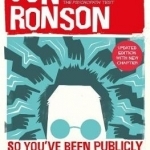
So You've Been Publicly Shamed
Book
From the Sunday Times top ten bestselling author of The Psychopath Test, a captivating and brilliant...
The Boys is adrenaline fueled "shock" TV at its best. It is begging you to watch it, even if it sometimes makes it hard to watch. But what makes The Boys work so well is under all the drugs, sex and violence, it has a lot to say.
The show follows Billy Butcher (Karl Urban) as he recruits a team of people who have bern wronged by Superheroes. In The Boys universe, the superheroes tend to not care so much about callateral damage, and honestly, most of them are douchebags (think Captain Hammer from Dr Horrible's evil singalong blog) .
As we learn more about their word the show not only becomes an obvious satire on superhero culture, but the our society as a hole. The religion episode, is one that really stands out as not being afraid to take shots.
The effects, mostly work pretty well, and nothing was bad enough to take me out of the escapeism. The acting is a bit all over the place, but Karl Urban really commands the screen.
It should be said that this is not for everyone. It is one of the mist graphic (non horror) things I have ever seen, and if you're not used to it you may find yourself checking out early. If you can handle the violence, it's worth it
The show follows Billy Butcher (Karl Urban) as he recruits a team of people who have bern wronged by Superheroes. In The Boys universe, the superheroes tend to not care so much about callateral damage, and honestly, most of them are douchebags (think Captain Hammer from Dr Horrible's evil singalong blog) .
As we learn more about their word the show not only becomes an obvious satire on superhero culture, but the our society as a hole. The religion episode, is one that really stands out as not being afraid to take shots.
The effects, mostly work pretty well, and nothing was bad enough to take me out of the escapeism. The acting is a bit all over the place, but Karl Urban really commands the screen.
It should be said that this is not for everyone. It is one of the mist graphic (non horror) things I have ever seen, and if you're not used to it you may find yourself checking out early. If you can handle the violence, it's worth it

Act Like a Lady, Think Like a Man: What Men Really Think About Love, Relationships, Intimacy, and Commitment
Book
The #1 New York Times bestseller in a newly revised, expanded edition. With over two million copies...
